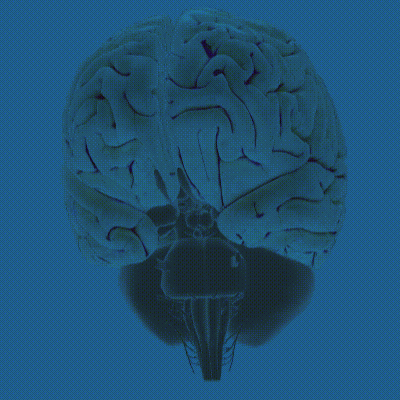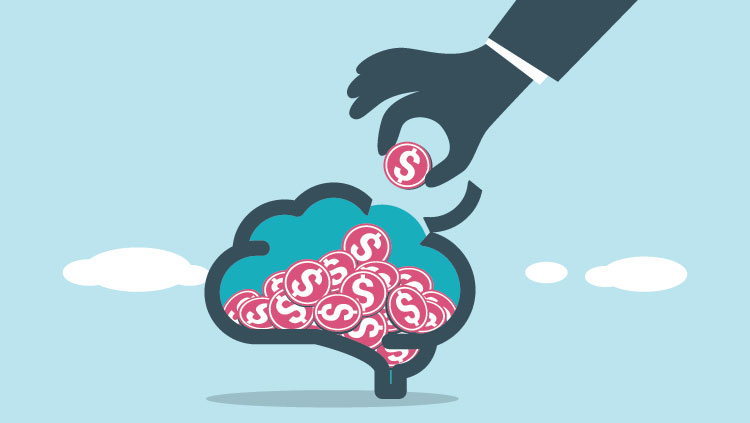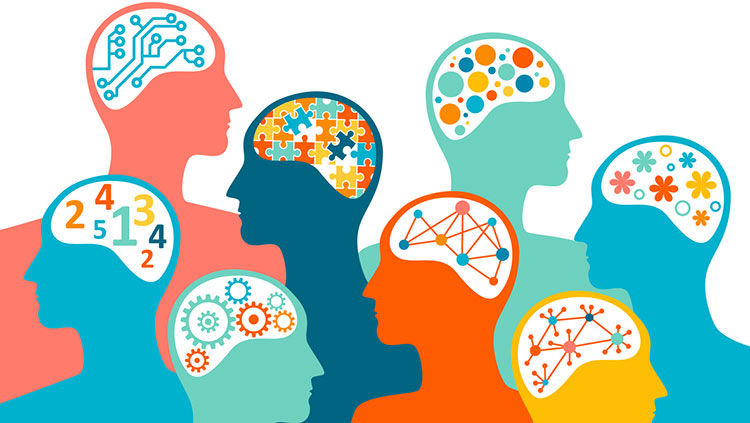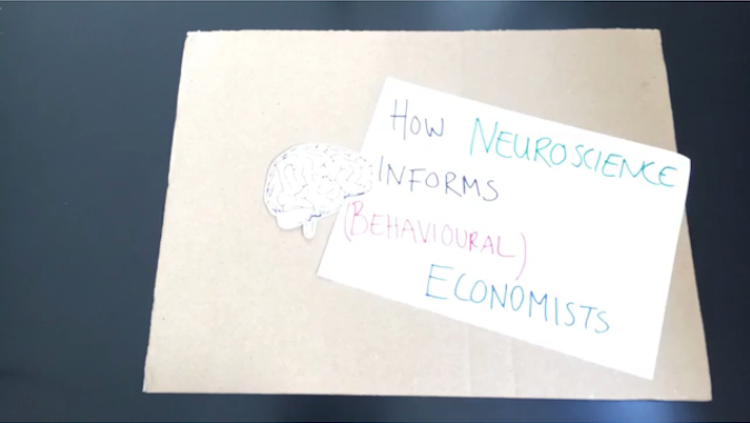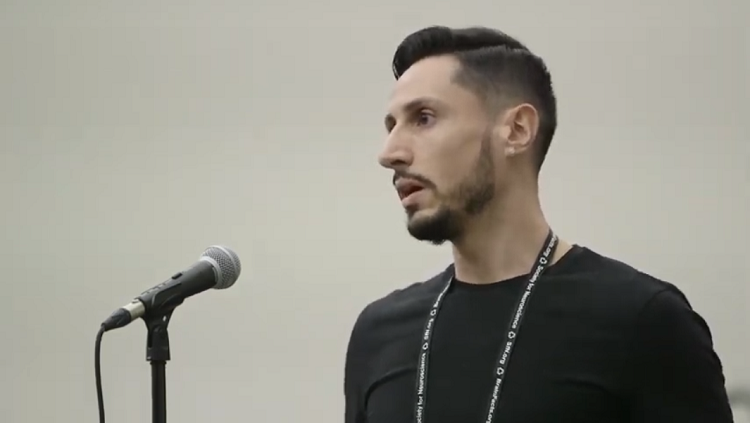How Poverty Shapes a Child's Mind and Brain
- Published14 Oct 2019
- Author Jackie Rocheleau
- Source BrainFacts/SfN

In a lab in Shivgarh, a large village in northern India, a young child sits on his father’s lap, watching colored squares flash on and off a computer monitor. A cap with sensors records the electrical activity in his brain. One researcher monitors the signals coming from the cap, while another notes the child’s eye movements.
These researchers, led by John Spencer from the University of East Anglia, want to know how parents’ socioeconomic status affects their children’s cognitive development.
Nearly half of the world’s two billion children live in poverty, and one in five live in extreme poverty, which the United Nations defines as below $1.90 per day.
For decades, we’ve known that poverty affects children’s health and academic success. Poor children usually experience more stress and hardship — such as poor nutrition or witnessing violence — than their wealthier peers, and they have fewer tools to address these problems. On average, poor children also experience more developmental delays, emotional problems, and lower academic achievement.
But, up until a few years ago, the missing piece in all of this was the brain. A growing body of research now shows that poverty changes the way children’s brains develop, shrinking parts of the brain essential for memory, planning, and decision-making. Scientists are also tapping into the brain’s capacity for change, uncovering ways to reduce these effects.
A Nascent Field
Martha Farah was one of the first to study poverty’s effects on the brain. She began her career investigating the visual system, but, in the early 2000s, she decided to make a change. The babysitters that helped her care for her young child came from low socioeconomic backgrounds. “Their lives were so different, in every way,” Farah recalls. The stark differences between the babysitters’ lives and Farah’s middle-class existence “hit me over the head like a piano falling out of a window,” she says. “I decided I needed to study this, and, because I was a cognitive neuroscientist, that was my approach.”
Farah — who now directs the University of Pennsylvania’s Center for Neuroscience & Society — recruited then-graduate student Kimberly Noble to help bridge the gap between poverty and behavioral measures like test scores. “Getting under the hood often tells you more than behavioral analysis alone,” says Noble.
Nearly half of the world’s two billion children live in poverty
In one of their first studies, Noble and Farah examined the cognitive abilities of 60 Philadelphia kindergarteners. The students performed a variety of tasks that tested their memory, spatial reasoning, language, and executive function — an umbrella term for high-level skills like planning, problem-solving, and self-control. In one task, for example, the children had to press a button every time an animal appeared on a computer screen, except when it was a cat.
Children from low socioeconomic backgrounds performed worse on the language and executive function tasks than their middle-class peers. Farah and Noble had predicted this. The regions of the brain involved in language and executive function — the perisylvian cortex and prefrontal cortex — are among the slowest to mature and are heavily shaped by a child’s life experiences.
Closing the Loop
The results, published in 2005, offered some of the first evidence of a poverty-brain connection.
Since then, more scientists have peeked “under the hood” at the neural machinery and found differences in cognitive performance as well as brain structures between wealthier children and those living in poverty. Poor children have smaller hippocampi and prefrontal cortical volumes, areas important for memory and complex thought, like reasoning and decision-making.
In 2015, researchers from the University of Wisconsin found these structural differences correlated with academic achievement. They analyzed MRI scans of 433 children between 4 and 18 years old from across the country and found that children from low socioeconomic backgrounds had less gray matter — brain tissue dense with neuron cell bodies — in the hippocampus and frontal and temporal lobes than what was expected for their sex and age. The poorest children showed the most delays in brain development and had the lowest academic achievement scores. After sifting through the data, the scientists concluded that the brain differences may have explained as much as a fifth of the academic achievement deficits they saw.
“When this study was published in 2015, researchers had already amassed data showing children growing up in poverty often perform worse in school than wealthier peers. But we didn’t understand the brain mechanisms,” says Seth Pollak, an author on the study. “This paper closed the loop.”
The Limits of Data
The science shows poverty can shape the brain. But the evidence has its limits. “In no way can we know an individual child’s circumstance and predict what that child’s brain would look like,” said Noble. Genetics, nutrition, relationships with friends and family, and other factors contribute to brain development, too.
And, most of the evidence collected so far is limited to children from the U.S. and U.K. Culture varies from country to country, and different countries have their own definitions of poverty. This means that children around the world have varying experiences with poverty, which may exert diverse effects on the brain.
Last April, Spencer’s group at the University of East Anglia reported data from their early work in Indian children. In the experiment, colored squares appeared on a computer screen for half a second before disappearing. When the squares reappeared, the color of one of them had changed. By tracking a child’s gaze, the researchers could determine whether they noticed the color change. The task gauges a child’s visual working memory — their ability to keep track of the visual details of a scene and notice changes.
The researchers found children from high socioeconomic status (SES) families were better at detecting the color changes than children from low SES families.
The researchers also monitored the children’s brain activity using functional near-infrared spectroscopy, a non-invasive brain imaging method that measures changes in blood flow via a cap with sensors. Higher SES children had less activity in parts of the frontal cortex involved in focus and attention. Less activity is actually a good thing — it means they expended less mental effort on ignoring distractions and could more easily focus on the task at hand. Now, the researchers are exploring this association in more depth, collecting data from more families to see how their original findings measure up.
Spurring Change
Scientists are careful to point out that the connection between poverty and the brain isn’t all bad news. “There’s nothing in the literature that suggests a situation is permanent,” Pollak says. Education and positive interactions with parents can buffer the effects of stress on the brain.
By casting issues like poverty in terms of brain development, it makes people realize it's a biomedical problem as well as a social problemNoble knows this. That’s why, in May 2018, she and a group of social scientists from around the U.S. started the Baby’s First Years study. In this randomized controlled trial recruiting new mothers from four different U.S. communities, researchers provide mothers with $333 per month, or about $4,000 a year.
“That [amount] has been associated with improvements in school achievement test scores,” Noble says. “It’s also roughly equal to social services moms might qualify for. We wanted an amount that would be likely to move the needle that also had policy relevance.”
Once the babies turn three, the researchers will test their language skills, emotional processing abilities, IQ, and more. A control group of children whose mothers receive just $20 a month will go through the same tests. This is the first study testing how income supplements affect brain development.
In the U.S., 21% of children live below the national poverty threshold of less than $25,500 per year for a family of four. Neuroscience research could propel change, potentially even swaying policymakers where behavioral data has not.
“Show policymakers a brain scan that shows structural deficits and it has a profound effect on how they think about policy,” Spencer says.
According to Pollak, the research has had “a huge impact” on non-scientists. The research is showing up in interventions like Noble’s, the National Conference of State Legislatures has even held workshops on brain development, and several states have passed legislation using neuroscience to inform social policy. “By casting issues like poverty in terms of brain development, it makes people realize it’s a biomedical problem as well as a social problem,” he says.
CONTENT PROVIDED BY
BrainFacts/SfN
References
Baby’s First Years (BFY). (n.d.). Retrieved October 4, 2019, from ClinicalTrials.gov website: https://clinicaltrials.gov/ct2/show/NCT03593356
Ending Poverty. (2018, December 3). Retrieved October 4, 2019, from United Nations website: https://www.un.org/en/sections/issues-depth/poverty/
Farah, M. J. (2018). Socioeconomic status and the brain: Prospects for neuroscience-informed policy. Nature Reviews Neuroscience, 19(7), 428–438. doi: 10.1038/s41583-018-0023-2
Hair, N. L., Hanson, J. L., Wolfe, B. L., & Pollak, S. D. (2015). Association of Child Poverty, Brain Development, and Academic Achievement. JAMA Pediatrics, 169(9), 822–829. doi: 10.1001/jamapediatrics.2015.1475
Johnson, S. B., Riis, J. L., & Noble, K. G. (2016). State of the Art Review: Poverty and the Developing Brain. Pediatrics, 137(4). doi: 10.1542/peds.2015-3075
Luby, J., Belden, A., Botteron, K., Marrus, N., Harms, M. P., Babb, C., … Barch, D. (2013). The Effects of Poverty on Childhood Brain Development: The Mediating Effect of Caregiving and Stressful Life Events. JAMA Pediatrics, 167(12), 1135–1142. doi: 10.1001/jamapediatrics.2013.3139
Noble, K. G., Houston, S. M., Brito, N. H., Bartsch, H., Kan, E., Kuperman, J. M., … Sowell, E. R. (2015). Family income, parental education and brain structure in children and adolescents. Nature Neuroscience, 18(5), 773–778. doi: 10.1038/nn.3983
Noble, K. G., Norman, M. F., & Farah, M. J. (2005). Neurocognitive correlates of socioeconomic status in kindergarten children. Developmental Science, 8(1), 74–87. doi: 10.1111/j.1467-7687.2005.00394.x
Only one third of children covered by social protection: ILO, UNICEF. (2019). Retrieved from https://www.unicef.org/press-releases/only-one-third-children-covered-social-protection-ilo-unicef
Poppe, J. (2013, December 23). Brain matters: Research into how the brain develops is shaping early childhood policies and programs. State Legislatures. Retrieved from http://www.ncsl.org/research/human-services/brain-matters.aspx
Poverty Thresholds. (2019, August 28). Retrieved October 4, 2019, from U.S. Census Bureau website: https://www.census.gov/data/tables/time-series/demo/income-poverty/historical-poverty-thresholds.html
Weisberg, D. S., Keil, F. C., Goodstein, J., Rawson, E., & Gray, J. R. (2008). The Seductive Allure of Neuroscience Explanations. Journal of Cognitive Neuroscience, 20(3), 470–477. doi: 10.1162/jocn.2008.20040
Wijeakumar, S., Kumar, A., Reyes, L. M. D., Tiwari, M., & Spencer, J. P. (2019). Early adversity in rural India impacts the brain networks underlying visual working memory. Developmental Science, 22(5), e12822. doi: 10.1111/desc.12822
Also In Law, Economics & Ethics
Trending
Popular articles on BrainFacts.org


